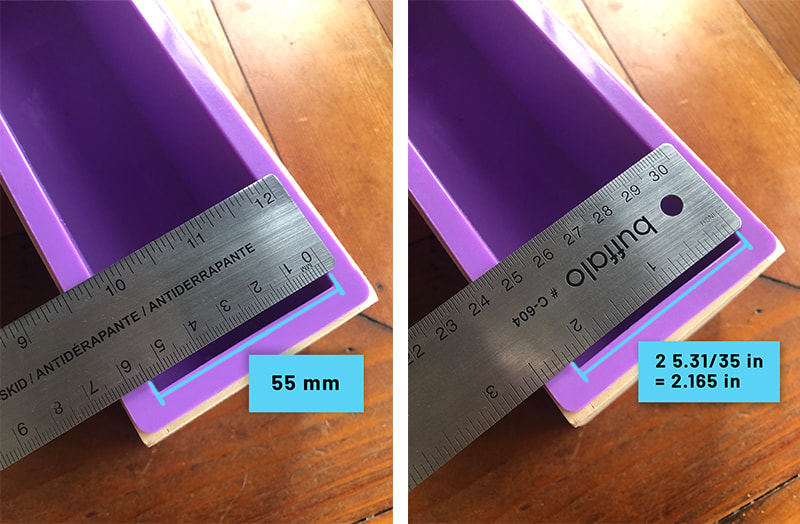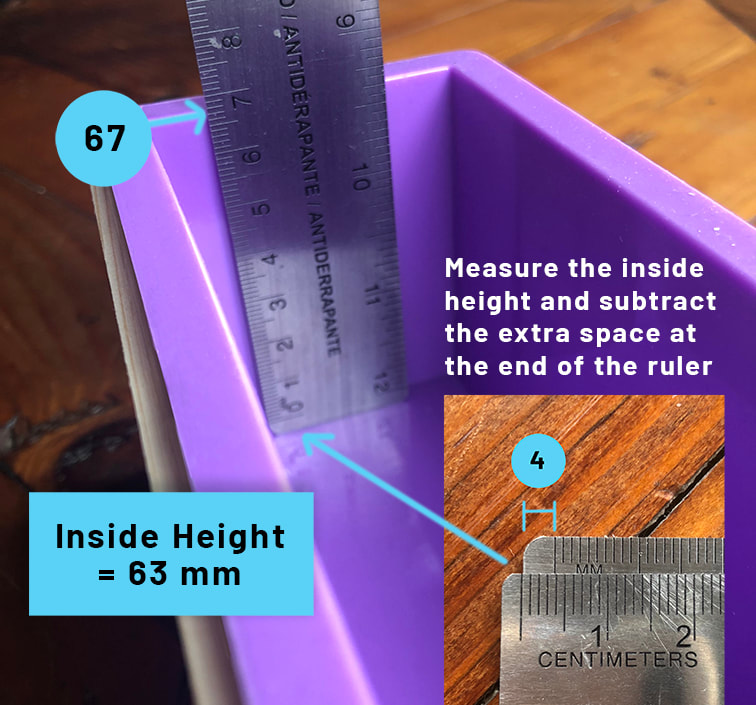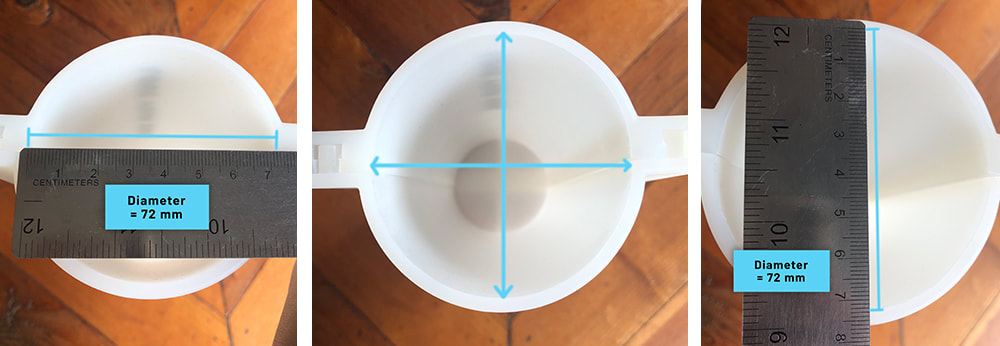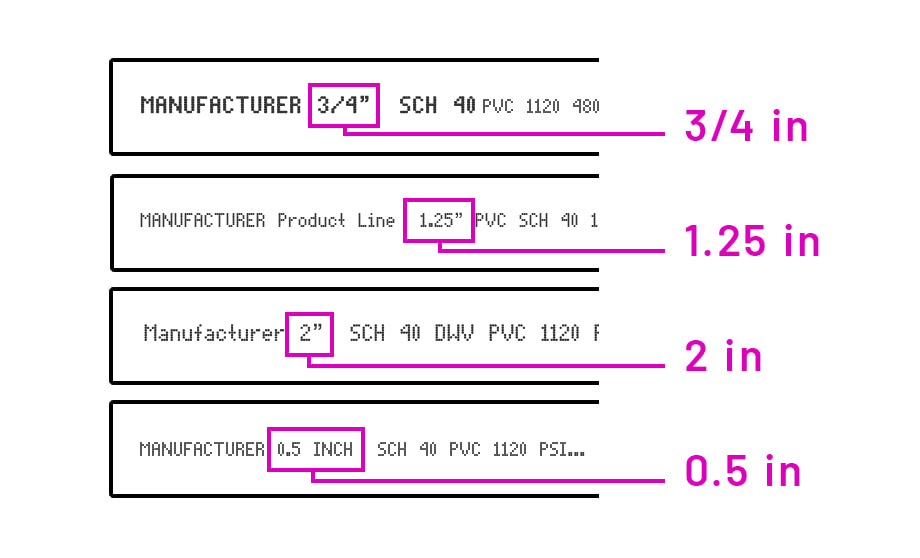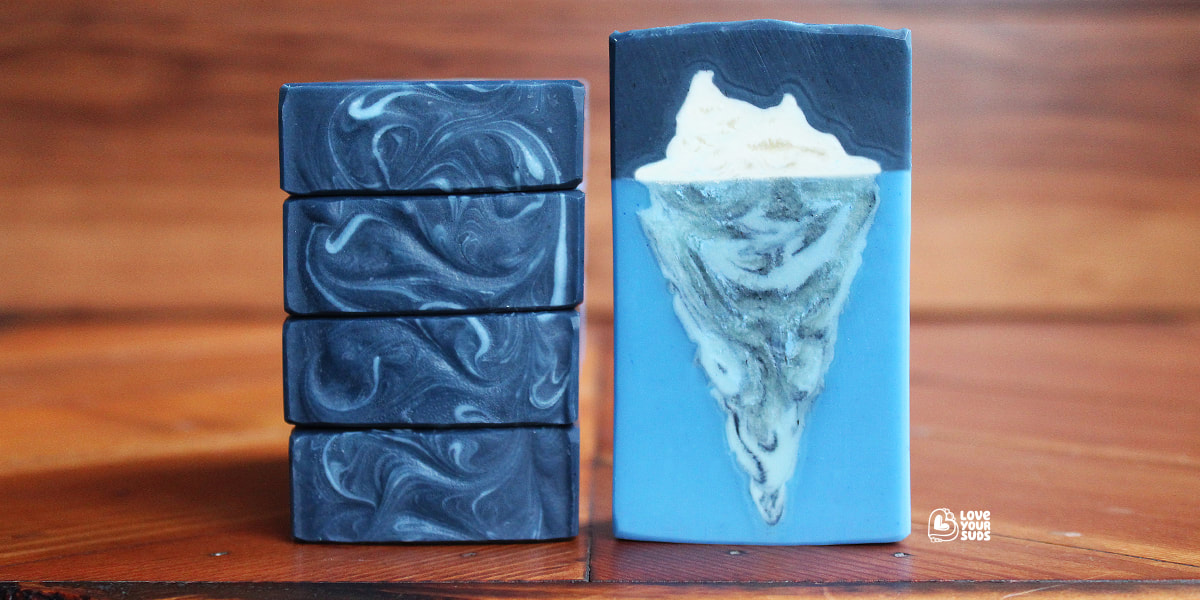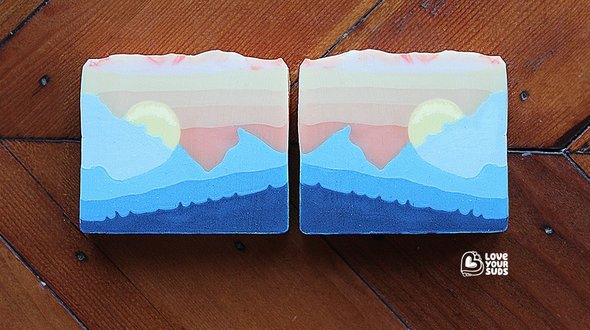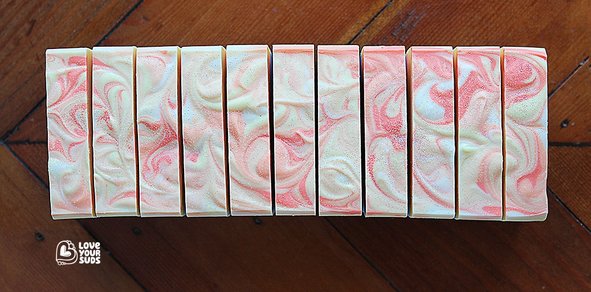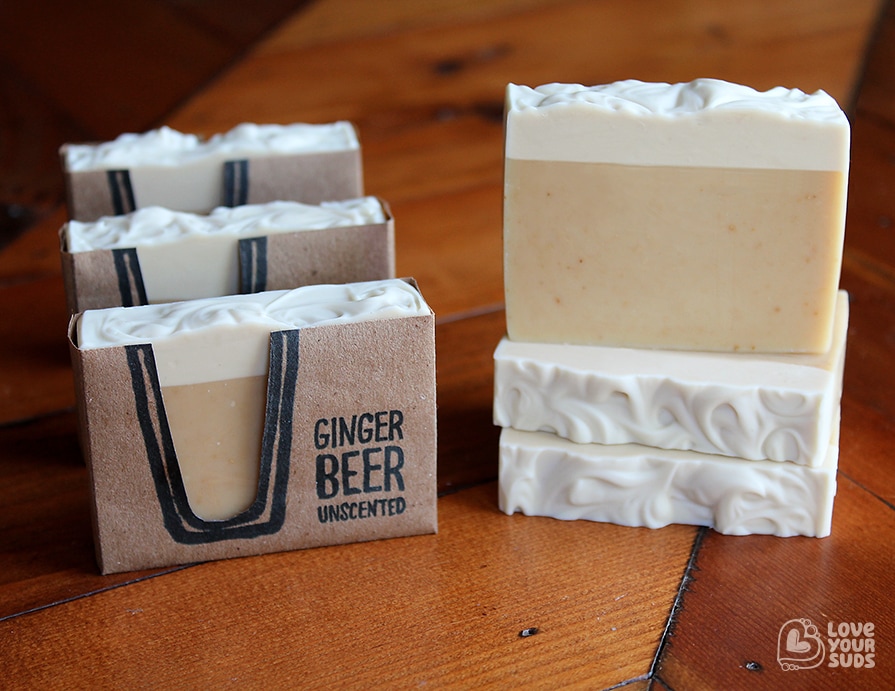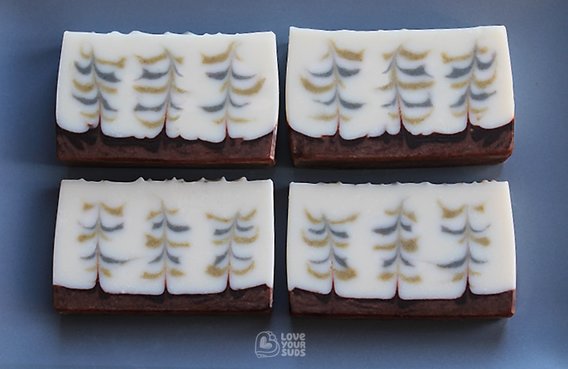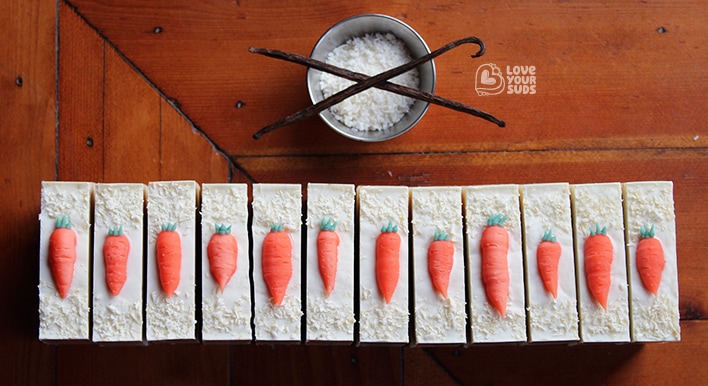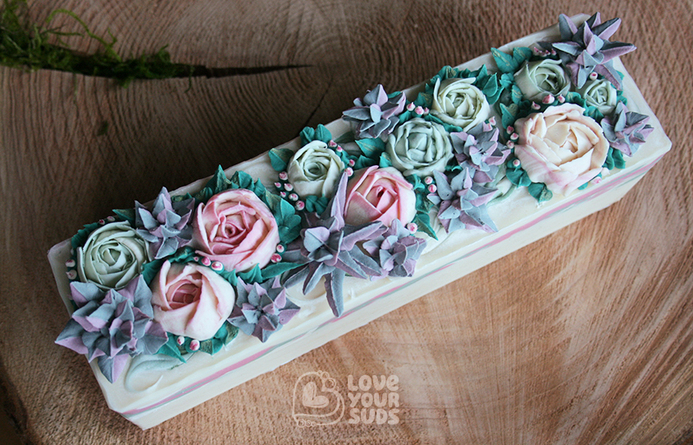|
The size of your mold determines the size of the Soap Shaper. There are a couple of steps that we need to take to guarantee our measurements are precise. Fortunately these steps are easy and all you need is a ruler or a measuring tape. How to measure your loaf moldStep 1: Measure the inside width When creating smooth-over or scraper-style Soap Shapers like the Mountain Soap Shapers the most important measurement is the inside width of your loaf mold. Some mold suppliers provide this measurement on the product listing webpage, however this information is not always accurate so it is important to always double check by measuring your mold yourself. If you use a liner with your loaf mold be sure that it is in place before taking measurements. Using a ruler or measuring tape, measure the inside width as seen below. It's always best to measure the width close to one of the ends because some molds can bow towards the middle.
How to measure your circular column moldStep 1 (one step only): Measure the inside diameter For pull-through Soap Shaper tools like the Kaleidoscope Soap Shaper the only measurement needed is the inside diameter of your column mold. Although some suppliers include the inside diameter on their website, any variations that occur during manufacturing can make these measurements inaccurate. Always double check by measuring your mold yourself. To measure the inside diameter of your column mold place a ruler or measuring tape across the open end and line it up with the widest point. The inside diameter is the distance across the middle of the mold, not including the thickness of the mold walls. Repeat these steps and measure at the point perpendicular to your previous measurement in a cross format. If the measurements are different, use the narrower of the two as the diameter of your mold. Look for the PVC pipe markings PVC piping is often used as molds for soap making. The nice thing about PVC pipe is that the size is named after the inside diameter. This means that 3 in PVC piping has an inside diameter of 3 in (give or take 0.5 mm due to imperfections during manufacturing). One way to identify the size is to refer to the pipe markings which are printed on the outside of the pipe. The size is usually listed after the manufacturer's name and is measured in inches. Measure twiceAccurate measurements are essential in creating the perfect sized Soap Shaper for your mold. With this in mind the measurements you provide are always checked against the size you select and the other information you share during the order process, like website links and mold specifications. If any inconsistencies are noted we will be in touch to confirm the details before your order goes into production. That way we can be sure that the Soap Shaper design tools we create for you are the perfect size.
5 Comments
There's beauty to be found in imperfections. I have always liked the idea of embracing things that are perceived as being imperfect and transforming them into design elements. This concept is perfectly captured by the Japanese philosophy of wabi-sabi, which encourages us to see the beauty in the flawed or imperfect. I also find that when I give myself permission to make mistakes I become more relaxed and often find greater enjoyment in the creative process. Any unplanned deviations along the way can then become opportunities to discover new and exciting techniques. This is one of the things I find most rewarding about soap making; the sense of being on a journey and making new discoveries.
Introducing Sunset Summit, my entry into this month's Greatcakes Soapworks Soap Challenge – an ombré challenge – where we had the opportunity to use any soap design or technique that we wanted while exploring an ombré colour palette.
For the April edition of the Great Cakes Soap Challenge, our host Amy put together something a little different for us to work on. Our task for this month was to create a “rustic” soap with a packaging design to match.
My soap making journey continues, and this month as a member of the Soap Challenge Club I had the opportunity to learn and practice a new technique call The Secret Feather Swirl; a lovely technique that it emulates either a feather or a tree depending on how you approach it.
Over the past couple of years soap making has fast become my number one hobby. It is something that I do outside of my work as an Art Director to relax and unwind while indulging my passion for creativity. Although all of my soap making has been done solo to date, I was excited to learn that the Soap Challenge for January 2017 was a collaboration challenge. The opportunity to make a soap with someone, while sharing knowledge and learning together – yes please!
No matter how busy the weeks become, I always find time to enjoy soap making. There is something about being creative and working with my hands that helps me to relax and unwind. Since July I have been participating in the Great Cakes Soap Challenge Club and this month was all about creating a soap that emulated a woodgrain pattern. Although I knew this month would be a busy time for me, I was determined to have a try at creating a soap for this month's challenge.
As a passionate newcomer to the art of soap making I delight in every opportunity to learn and practice. A few months ago I signed up for the Soap Challenge Club where members receive a monthly tutorial curated by soap artist, Amy Warden. This month's challenge is to create a soap using piping; a technique used in cake decorating to shape buttercream icing into swirls, rosettes and other floral embellishments. I was excited to give it a try.
|
About the authorBelinda Williams is a creative at heart who loves to practice the art of soap making. Archives
June 2020
Categories |
|
Copyright © 2017-2023 Love Your Suds.
|

